Don’t Get Hooked: Recognizing and Reporting USPS Scam Text
6 Mins Read
Published on: 14 January 2025
Last Updated on: 16 January 2025
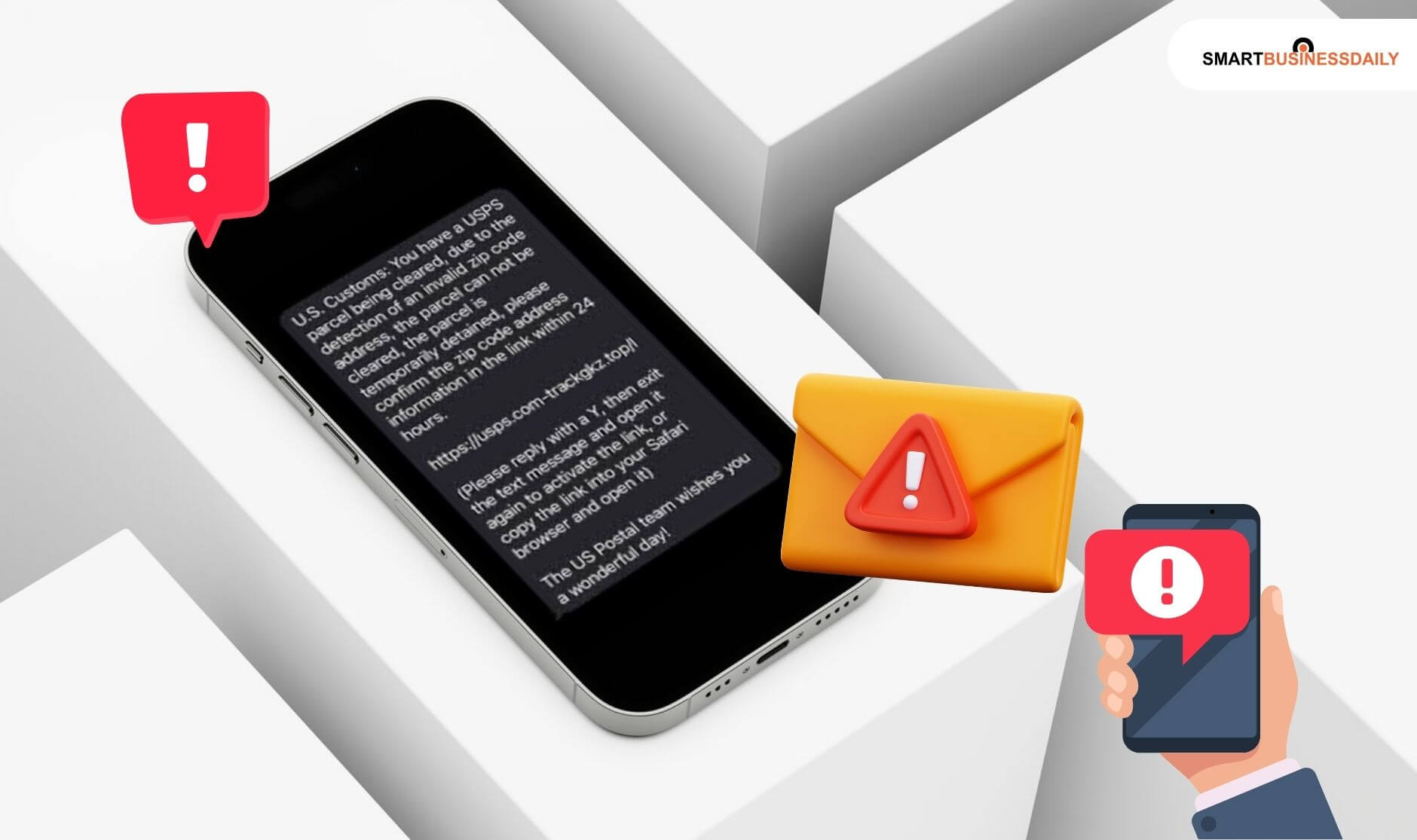
toc impalement
I am a GenZ, and trust me! Even I fell for the USPS scam text, so watch out!!!
Nowadays, during this digital era, scams can be more clever and much more challenging to identify. Among the most widespread possible scams you would come across today is the USPS text scam.
Countless people have become victims of this kind of fraud. Therefore, you need to know how to detect and avoid this scheme. This blog will help you know about the appearance and modus operandi of the USPS scam text and show you how best to protect your interests.
What Is USPS Scam Text?
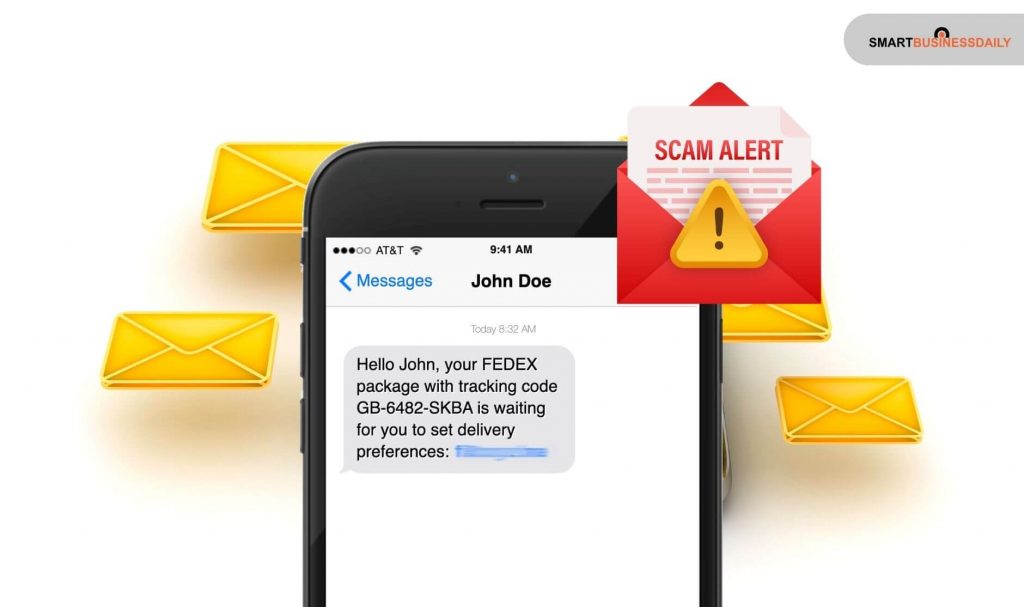
A USPS scam text is a fake message that looks like it comes from the United States Postal Service. Generally, these texts will alert you to some problem with a package delivery: either it couldn’t be delivered, one is on its way, or there’s an issue with your shipping address.
But these texts are not trying to assist you in any way with a delivery problem; they want to phish your personal info, like credit card numbers, Social Security numbers, or login credentials.
The scammers who send out these texts often employ convincing language, logos, and even fake tracking numbers to make the message appear real.
They can contain links to fake sites that appear to be the USPS official website, which will dupe you into providing sensitive information.
How Can You Spot A USPS Text Message Scam?
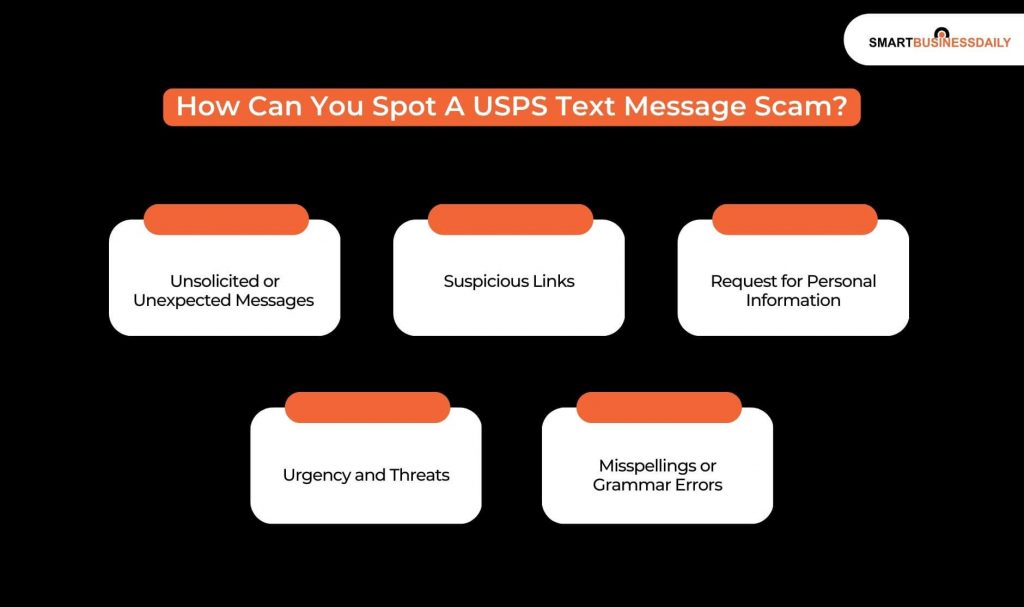
It’s important to identify a USPS scam text as early as possible to avoid falling into the trap. There might be a possibility that once you fall into this trap, you might not be able to come out of it on time. You might lose some money with this deal. Here are some common signs that a text may be a scam:
Unsolicited or Unexpected Messages
If you weren’t expecting a package from USPS, BEWARE! It’s common for scammers to send messages stating that you have a package or missed a delivery. USPS will usually send you an official email or notice if a package is en route.
Suspicious Links
A USPS scam text will usually contain a link that directs you to a website. Always double-check the URL before clicking. The fake websites usually resemble the real USPS website but have misspellings or strange domain names.
Request for Personal Information
Legitimate USPS messages never request personal sensitive information by text or email. If a message asks for information such as your Social Security number, bank account number, or credit card number, it is a scam.
Urgency and Threats
Scammers create a sense of urgency to pressure you into taking action quickly. They may say something like, “Your package cannot be delivered without immediate payment!” or “We need your personal details to avoid delivery delays.”
Misspellings or Grammar Errors
While official USPS texts are professionally written, scam texts often include spelling mistakes, awkward sentences, or strange punctuation. That is a sure sign that the message is not real.
What Happens If You Fall for a USPS Scam Text?
Falling for a USPS scam text can be pretty severe. If you give out your personal information, they can use that for identity theft or financial fraud. They might start making unauthorized purchases using your credit card details or even open new accounts in your name. It could be a very long process to have these issues cleared up, and you may incur heavy losses.
Also, clicking on a malicious link from a USPS scam text can fill your device with malware. This malware could compromise sensitive information, such as passwords or banking information, and make one more susceptible to further scams.
How To Protect Yourself From USPS Scam Text
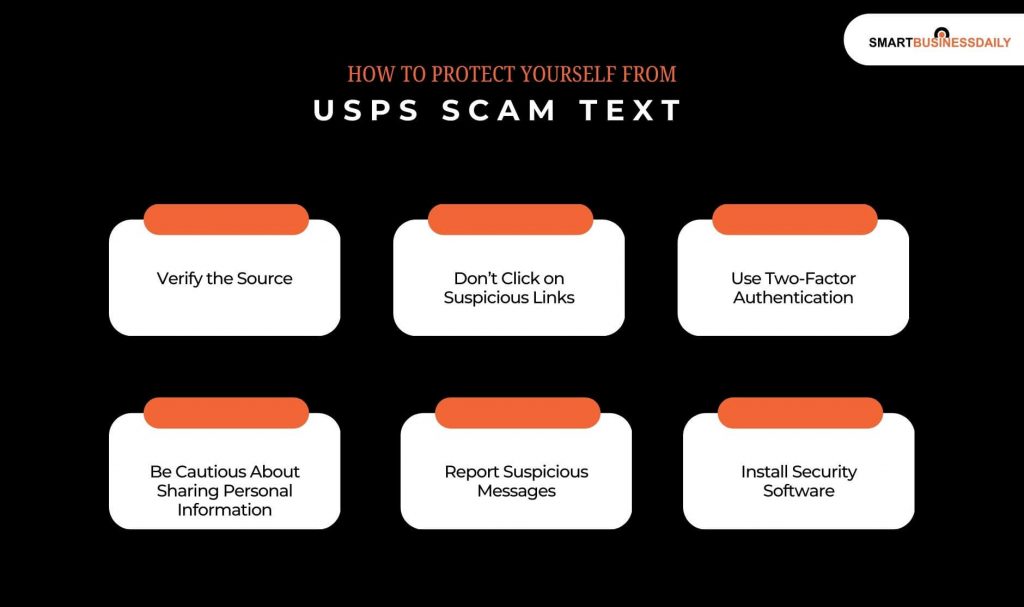
At times, these scam texts take you a long way into this fraud process which can damage you both financially and mentally. You might lose money along with your mental peace. To avoid falling victim to USPS scam texts, follow these simple steps:
Verify the Source
If you receive a text about a package, first check the official USPS website or use the USPS tracking tool to verify if you have any pending deliveries. You can also call your local USPS office for confirmation.
Don’t Click on Suspicious Links
Always avoid clicking on links in unsolicited messages. Instead, visit the official USPS website directly by typing “www.usps.com” into your browser. This ensures you are accessing the real site.
Use Two-Factor Authentication
If you have an online account with USPS, enable two-factor authentication (2FA). This extra layer of security makes it more difficult for scammers to access your account, even if they manage to get your password.
Be Cautious About Sharing Personal Information
Never share personal information such as your Social Security number, credit card details, or bank account number in response to unsolicited texts or emails. USPS will never ask for this kind of information via text.
Report Suspicious Messages
Report a USPS scam text when you receive one: forward the message to the USPS Consumer Advocate at 1-800-275-8777 or report it online. The more reports of scams made the sooner the authorities can take action.
Install Security Software
Download and install anti-virus and anti-malware software to protect your gadgets from malicious sites or links that might try to harvest your data. It is important to consider data before getting carried away when you receive texts such as these.
What Should You Do When You Receive A USPS?
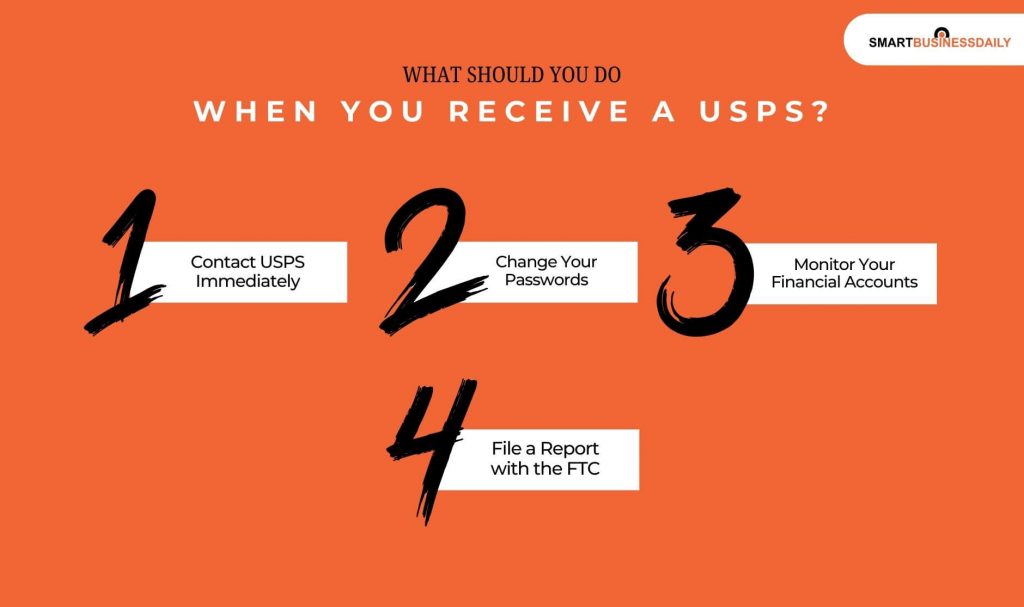
If you believe you have already fallen for a USPS scam text, you need to act fast. You also need to think logically instead of emotionally when you receive a USPS. Here’s what to do:
Contact USPS Immediately
If you gave out any personal info, contact USPS immediately. They can show you what to do next and may be able to help you stop further damage.
Change Your Passwords
Change your passwords immediately if you give out your login information for any online accounts. Use strong, unique passwords, and do not reuse the same password on multiple sites.
Monitor Your Financial Accounts
Keep an eye on your credit card and bank accounts for any unauthorized transactions. If you see anything suspicious, report it to your bank or credit card company. You may also want to freeze your credit to prevent identity theft.
File a Report with the FTC
Scams like the USPS scam text are illegal. You can submit a complaint to the Federal Trade Commission (FTC) online. They track scams and help prevent further fraud.
My Experience
Over the weekend, I received two calls from the callbox of my apartment, but I wasn’t expecting any guests or deliveries, so as usual! I sent the calls to voicemail. Later, I got an email from “USPS.com,” saying that I missed a delivery and needed to update my information for re-delivery.
The website looked nearly identical to USPS’ official site, and there weren’t any noticeable misspellings, so I thought it was legitimate.
I did and then updated my shipping address and was asked to pay a $1.88 re-delivery fee. Odd, but I continued and inputted my credit card info. Then, the site requested a verification code that would be sent via text.
That’s when I began to feel uneasy—I never received the code. I decided to play it safe and went to the official USPS site via Google and checked the tracking number I was given, and it didn’t exist.
I called USPS directly, and they confirmed it wasn’t an actual tracking number. They warned me not to give out any information.
I immediately canceled my credit card, feeling stupid for having fallen for the scam. Luckily, I had acted before it went further. This experience taught me to always be on high alert, even when things are very plausible. I am sharing USPS package scam text experience in hopes of preventing someone else from making the same mistake. Stay safe out there!
RELATED POST:


















Comments Are Closed For This Article